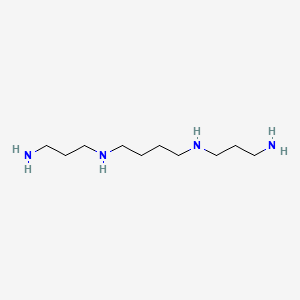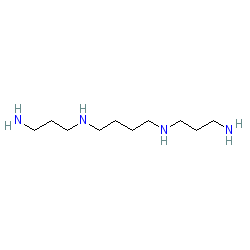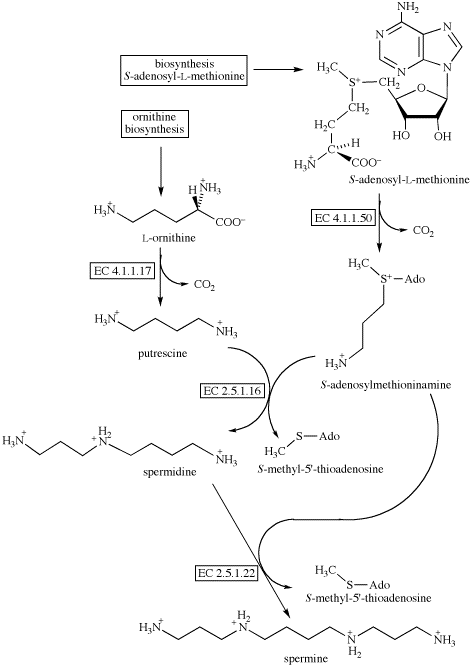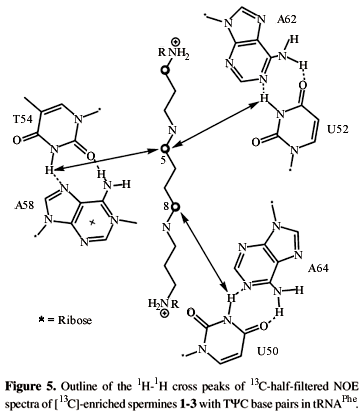3DMet B01325 Formula C10H26N4 Melting point 29 °C Appearance Colourless crystals | Molar mass 202.34 g/mol Density 937 kg/m³ Boiling point 130 °C | |
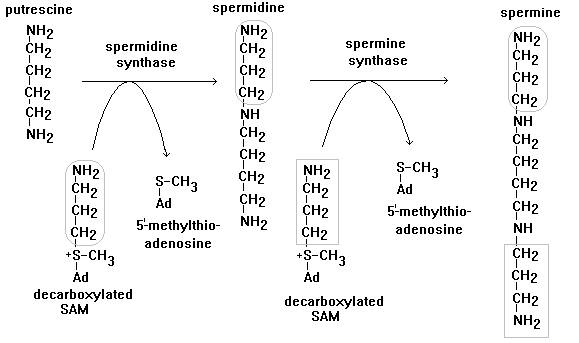 | ||
Related compounds | ||
Spermine is a polyamine involved in cellular metabolism found in all eukaryotic cells. The precursor for synthesis of spermine is the amino acid ornithine. It is found in a wide variety of organisms and tissues and is an essential growth factor in some bacteria. It is found as a polycation at physiological pH. Spermine is associated with nucleic acids and is thought to stabilize helical structure, particularly in viruses.
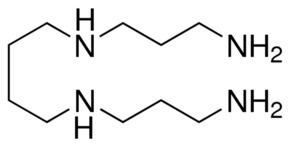
Crystals of spermine phosphate were first described in 1678, in human semen, by Antonie van Leeuwenhoek. The name spermin was first used by the German chemists Ladenburg and Abel in 1888, and the correct structure of spermine was not finally established until 1926, simultaneously in England (by Dudley, Rosenheim, and Starling) and Germany (by Wrede et al.). Spermine is the chemical primarily responsible for the characteristic odor of semen.

Derivative

A derivative of spermine, N1, N12-bis(ethyl)spermine (also known as BESm) was investigated in the late 1980s along with similar polyamine analogues for its potential as a cancer therapy.
